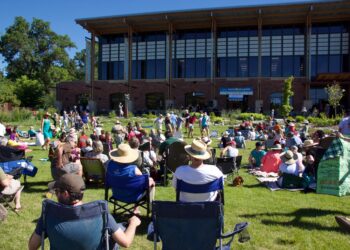EBS STAFF
In a recent press release, the Montana Department of Environmental Quality and the Department of Public Health and Human Services advises recreationists to be on the lookout for harmful algal blooms (HABs) that can occur on Montana’s lakes and reservoirs.
HABs can release toxins that can harm human and animal health. They can occur when conditions like nutrient pollution, sunlight and temperature cause a rapid overgrowth of blue-green algae, also called cyanobacteria.
Blue-green algae are native organisms and commonly occur at low, safe densities in Montana’s lakes, streams and reservoirs. Blue-green algae are often confused with green algae since both can produce blooms that affect recreation, cause odor issues and reduce oxygen in the water. However, unlike its blue-green counterpart, green algae do not produce harmful toxins.
A HAB can be identified by the coloration or scum in the water looking like spilled paint, pea soup or grass clippings. It is often blue, green or red in color. Recreationists can report suspected HABs online to help alert others and prevent illness.
Toxins can be produced at any time when a bloom is present and remain in the water even after the bloom has dissipated. Toxins in the water may cause skin and eye irritation upon contact while inhaling water droplets with toxins can cause irritation of the respiratory system. If ingested, toxins can cause headache, nausea and vomiting. Pets and livestock can become severely ill and even die if they ingest the toxins. HABs do not always release toxins.
If the water shows signs of a HAB, do not drink, swallow or swim in the water and keep children, pets and livestock out. Recreationists should rinse themselves off and their pets with tap water immediately if they believe they’ve come into contact with an HAB. If an HAB-related illness is suspected in a person or animal, call a health care provider or veterinarian, or if it is an emergency, call Poison Control immediately at 1-800-222-1222.
Nutrients like nitrogen and phosphorus fuel algae growth and potential HABs. To reduce nutrient pollution, a factor in causing algae growth and HABs, residents can reduce their use of lawn or crop fertilizers and landscape with native plants. Restoring native woody vegetation, plants and grasses along streams and lakes can help filter pollution and stabilize land. Homeowners who use septic systems should schedule regular service and consider upgrading it to a higher-level treatment system.
People can submit and view reports of suspected HABs to the Montana DEQ and DPHHS website. Expect state agencies to work with local jurisdictions to evaluate and monitor. Recreationists can check confirmed HABs online throughout the summer.















